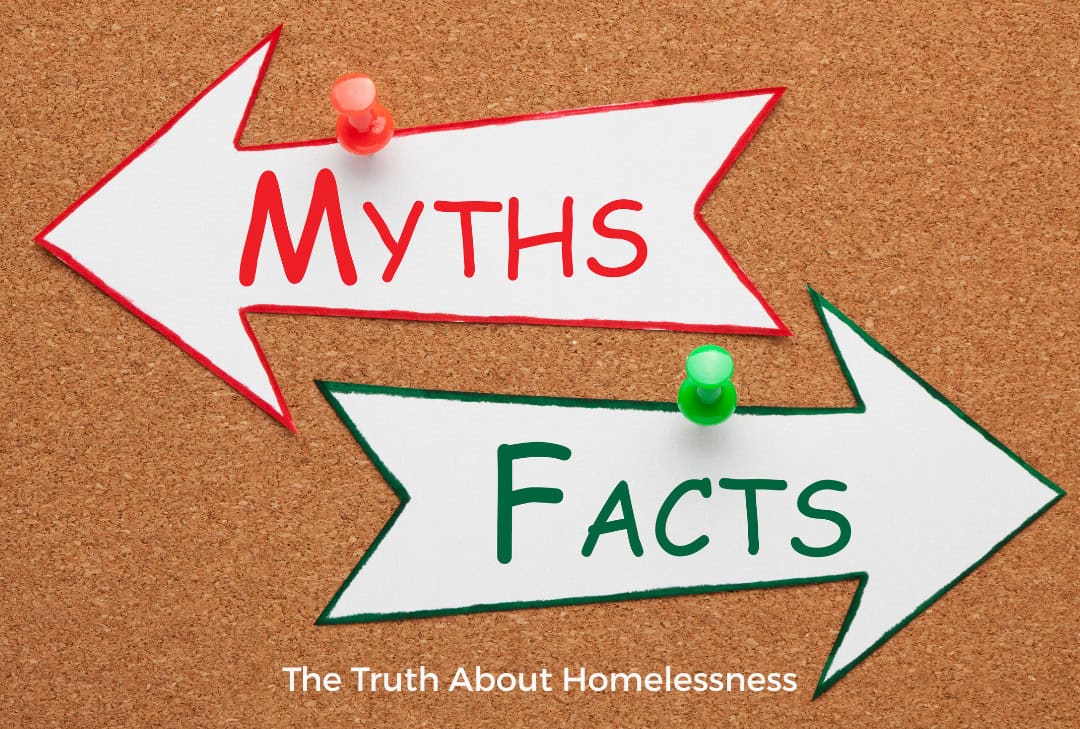Homelessness Fact vs Fiction

There are many myths about the causes of and solutions to homelessness, particularly the “Housing First” approach that has been proven by decades of research to be effective and cost-effective.
A recent data and trends report by the U.S. Interagency Council on Homelessness lists some of the most common myths – and the reality surrounding them:
Myth: People experiencing homelessness just need to get a job.
Fact: While employment helps people stay housed, it does not guarantee housing. As many as 40-60 percent of people experiencing homelessness have a job, but housing is unaffordable because wages have not kept up with rising rents.
There is no county or state where a full-time minimum-wage worker can afford a modest apartment. At minimum wage, people must work 86 hours a week to afford a one-bedroom. Even when people can afford a home, one is not always available. In 1970, the U.S. had a surplus of 300,000 affordable homes. Today, only 37 affordable homes are available for every 100 extremely low-income renters. As a result, 70 percent of the lowest-wage households spend more than half their income on rent, placing them at high risk of homelessness when unexpected expenses (such as car repairs and medical bills) arise.
Myth: People experiencing homelessness choose to live outside in tents or cars.
Fact: Homelessness usually happens because of economic reasons (such as job loss), and many people have nowhere else to go but outside. Many shelters are full or limited to people who are sober, straight, free of disability or criminal history, and/or willing to separate from their children, partners, or pets.
These discriminatory policies leave parents, couples, pet owners, LGBTQIA+ members, and people with substance use disorder, disabilities, or criminal records on the streets, where they live in constant fear of hunger, violence, storms, and infectious disease. “Out of sight, out of mind” laws that make it illegal to sit or sleep in public outdoor spaces only exacerbate the revolving door between homelessness and incarceration, and they do not solve homelessness. Housing and support solve homelessness—not handcuffs.
Myth: People experiencing homelessness are dangerous and violent.
Fact: Not having a home does not make someone a criminal, just like having a home does not make someone innocent of all crimes. According to data, people experiencing homelessness are far more likely to be victims of violent crime than to commit violent crimes. But because of the infrequency of violent crimes committed by people experiencing homelessness, they tend to be considered “newsworthy” and attract more media attention.
Myth: Most people experiencing homelessness have substance use and/or mental health disorder.
Fact: While rates of homelessness for people with severe mental health or substance use disorders are high, most people with no home also have no mental health or substance use disorder. Furthermore, most Americans with mental health or substance use disorders do not experience homelessness, demonstrating that mental health and substance use disorders do not cause homelessness.
Myth: Homelessness is not preventable.
Fact: Homelessness is a policy choice, and the COVID-19 pandemic proved the power of prevention. During the pandemic, governments instituted eviction moratoriums, deployed emergency rental assistance, expanded unemployment assistance and the Child Tax Credit, and issued cash directly to millions of lower-income Americans. In effect, poverty dropped by 45 percent, millions of evictions were prevented, and homelessness remained steady during a time when a surge in homelessness would have been expected.
Myth: Housing First only helps people get housing but does not address the issues that led them to homelessness—and could again.
Fact: The Housing First approach recognizes that housing is the immediate solution to homelessness—but not the only solution. Housing First offers support (such as substance use treatment, legal aid, or job training) at the same time as housing and continues to offer support long after people are housed to prevent them from losing their home again.
One element that sets Housing First apart from some other approaches is that it does not force people to accept support. Forced mental health or substance use treatment, for instance, is proven to be largely ineffective and to have unintended, harmful, even deadly consequences.
Myth: Housing First is expensive and ineffective.
Fact: Decades of research have proved how effective and cost-effective Housing First can be. Studies show that nine out of 10 people remain housed a year after receiving Housing First assistance, and that housing can be three times cheaper than criminalization. According to a recent study, Housing First pays for itself within 1.5 years and can reduce homelessness and government reliance – all while getting people back to work.